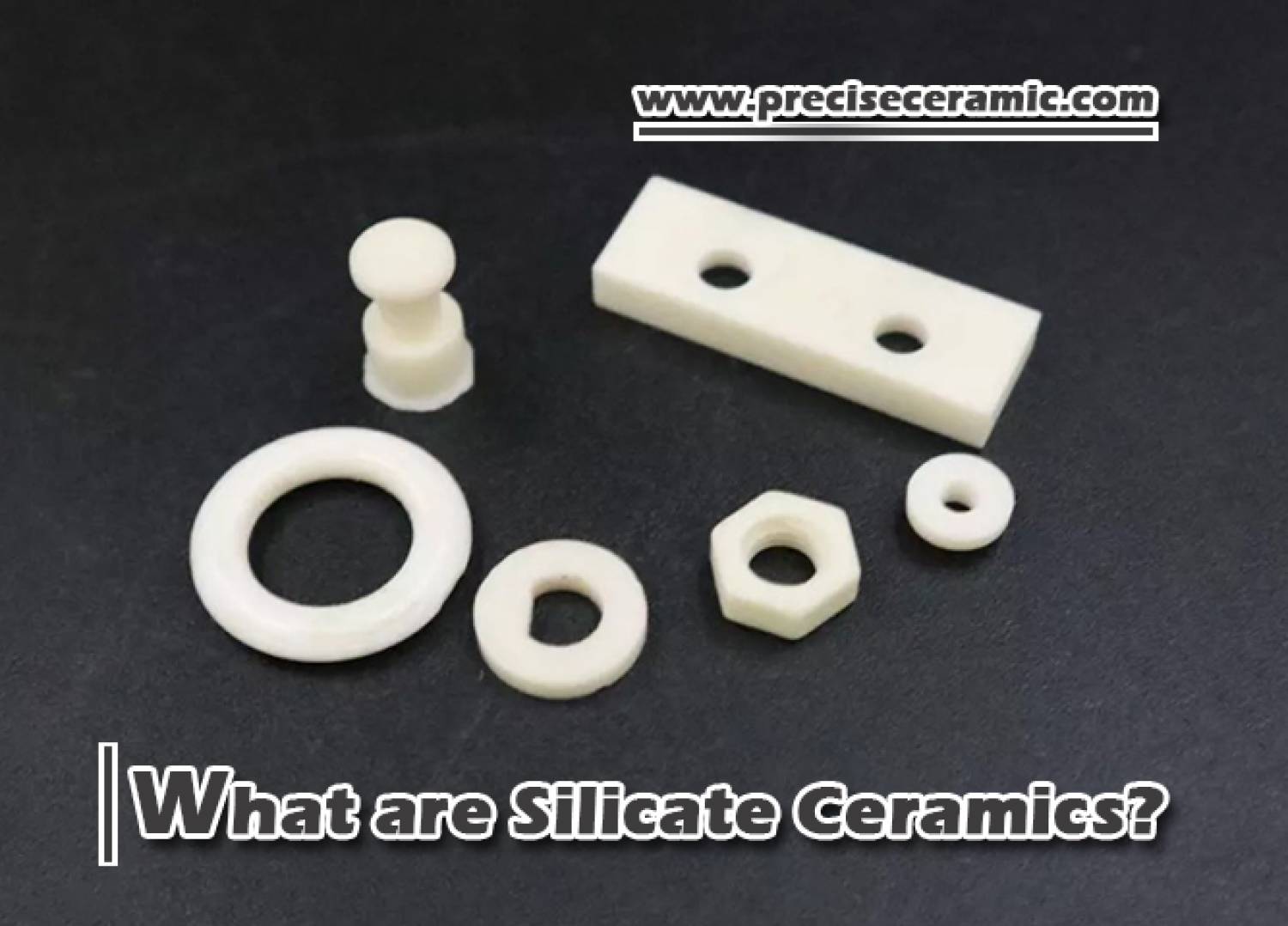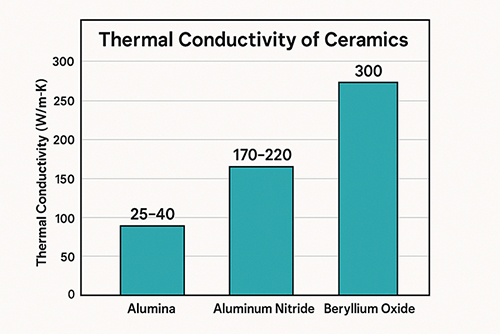What Are Silicate Ceramics?

Materials called silicates typically contain silicon and oxygen. It was the first type of technical ceramic created to aid the development of early electrical technologies. In other words, Silicate ceramics were first used for electrical insulation in the early stages of technical ceramics research. The majority of the raw materials used to create silicate ceramics are from nature. The kind and quantity of raw ingredients can be changed to create a wide range of multiphase ceramics with various properties.
Characteristics of Silicate Ceramics
Silicates generally have superior dielectric characteristics, are resistant to thermal shock, and work well at high temperatures. Electrical insulating infuses, circuit breakers, thermostats, and lighting technologies are all made of silicate ceramic components, which are utilized in electronics and electrical engineering. Silicate ceramics are known to have:
- Excellent electrical insulation (between 1x1010 and 1x1013 cm)
- Modest to little linear expansion (0.4x10-6K-1 to 6x10-6K-1)
- Excellent tolerance to thermal shock (250 to 610 K)
- 2–4 W/mK of low thermal conductivity
- Flexural capacities between 80 and 180 MPa
Application of Silicate Ceramics
Silicate ceramic materials are used in heating, environmental, and thermal engineering applications because of their capacity to offer thermal insulation. They are also used for the emission of scents and pesticides, as catalyst carriers, or for a variety of uses in laboratories. Products for laboratory use and precision components are a few of its known applications in technology. Silicate ceramic components used in fuses, circuit breakers, thermostats, and lighting technology provide electrical insulation in different applications. These components are employed in electronics and electrical engineering.

Varieties of Silicate Ceramics
An impressive range of silicate ceramic is available today with each having its own unique features and best use. Ceramic materials made of silicate include:
- Magnesium Technical Porcelain Silicates
- Ceramics by Mullite
- Some specialized porcelain ceramics made of Silicates
- Technical Porcelain. This is often made of alumina and silica (SiO2)·(Al2O3). Their organic constituents are quartz, feldspar, soapstone, and clay (kaolin).
There are two varieties of specialized porcelain that can be made from silicate ceramics: quartz porcelain and alumina porcelain, depending on the ratio of silica and alumina in the material composition. Compared to silica porcelain, alumina porcelain has a larger percentage of more expensive alumina and a higher mechanical strength. Technical porcelain typically has the following features:
- Excellent dielectric characteristics
- High chemical resistance
- High mechanical strength
- Electrical engineering typically uses technical porcelain as a good insulator.
Ceramics from Magnesium Silicates
Steatite and cordierite are examples of magnesium silicates, which also contain some alumina and magnesia (MgO)·(Al2O3). Mullite, soapstone, clay, corundum, and other natural materials are components of magnesium silicates. Below is the method used to prepare steatite ceramic: Talc is the primary ingredient, with at least 10% clay and fluxes (barium carbonate, BaO, CaO). SiO2 could be added to improve firing. The steatite ceramic's electrical characteristics (work frequency) depend on the type of flux used. Raw ingredients are combined with a slurry after being wet-milled into tiny particles. After that, the slurry is either extruded or sprayed dry to form sphere-shaped granules, then pressed. The temperature for firing is 2460–2480 °F (1350-1360 °C). Strict temperature regulation is crucial. Steatite typically exhibits the following listed traits:
- Good dielectric characteristics
- High mechanical strength
- A very low loss factor
Steatite is employed in the production of sockets, control housings, insulating beads, low-voltage power fuses, and base plates in the fields of thermal engineering and electrical engineering. The following traits typically apply to cordierite:
- Low thermal expansion coefficient
- High thermal shock resistance
- Good mechanical strength
Cordierite is primarily utilized in heat engineering to create catalyst carriers, water heater parts, heating element pipelines, gas heater inserts, and supports for heating elements in automobiles.
Ceramics from Mullite
Alumina (Al2O3), glass, and mullite (3Al2O3·2SiO2) make up mullite ceramics (SiO2). Porosity in sintered mullite ceramics can reach 10%, however, by adding more glass phase, it can be significantly reduced by 10%. Mullite Ceramics typically exhibits the following qualities:
- High strength
- Strong resilience to thermal shock
- Relatively little thermal expansion, and good creep resistance.
Mullite ceramics are used to create refractory materials for the glass industry, kiln furniture, slide gates, ladles for molten metal, and high-temperature components.
The Major Challenge During the Production
Due to their uncomplicated natural constituents and easy manufacturing procedures, these materials (mullite and magnesium silicate) provide a low-cost alternative. However, the heat treatment process in the manufacture of silicate ceramics determines product quality but raises manufacturing costs. Therefore, it makes sense to optimize the heat treatment step during production. Methods that enable a maximum result while also ensuring that the component is not destroyed must be found for the drying process, which includes the binder burn-out, the quartz conversion, and the dewatering. The goal of firing is to produce products that are nearly net-shaped, have tight manufacturing tolerances, and have desirable material characteristics. For instance, by adding acceptable fire conditions, new designs can be made. The output of the heat treatment must be increased for financial reasons, just as the amount of energy used and maintenance required must be reduced.
Conclusion
Silicate ceramics are applicable in general due to their excellent dielectric qualities, resilience to thermal shock, and high-temperature performance. These materials' low RF loss factors and minimal thermal expansion have led to novel uses in recent years. Thank you for reading our article and we hope it can help you to have a better understanding of Silicate ceramics. Advanced Ceramic Materials (ACM) supplies high-quality ceramic powder and related products to meet our customers’ R&D and production needs. Please visit https://www.preciseceramic.com/ for more information.
{{item.content}}
LEVE A REPLY
{{item.children[0].content}}
{{item.content}}
LEAVE A REPLY
SUBSCRIBE OUR NEWSLETTER
- Boron Nitride in Cosmetics: Enhancing Performance and Sensory Appeal
- Maximize MOCVD Yield and Purity with Hexagonal Boron Nitride Setters
- What Are the Advantages and Uses of Boron Nitride Ceramic Sheet?
- The Compression Annealing Advantage for Pyrolytic Boron Nitride
- Beyond Insulation: The Surprising Spectrum of Ceramic Thermal Conductivity











